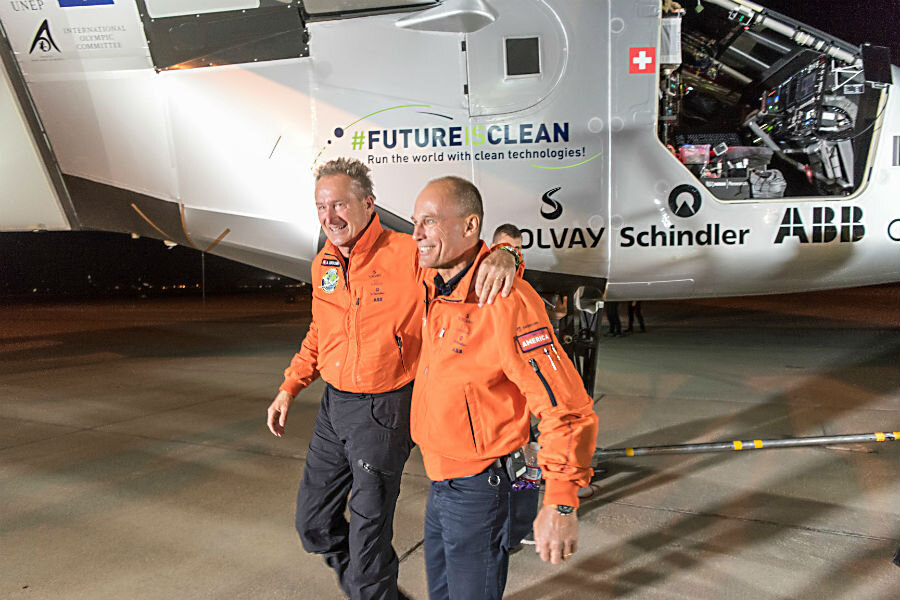Solar Plane soars over Mojave Desert on 10th leg of flight around the world
Loading...
Solar Impulse 2 finally touched down in Arizona Monday night, after a 16-hour flight from California, completing the 10th leg of its historic journey round the world.
A trip from California to Arizona would take a regular plane just two hours, but flying on a fuel-free plane is a 16-hour adventure filled with breathtaking views of the Mojave Desert.
Solar Impulse 2 is in the midst of an around-the-world tour that began March 2015 in Abu Dhabi, United Arab Emirates. The journey has encountered countless obstacles along the way, forcing the pilots to make unplanned stops, including one Japan after being caught in dangerous weather, and 9-month long delay in the island of Oahu in Hawaii, due to battery damage that the plane sustained on its journey from Japan.
But the quest to travel across the globe continues. The two pilots André Borschberg and Bertrand Piccard, both from Switzerland, hope to inspire people by highlighting the importance of renewable energy and the spirit of innovation.
Mr. Borschberg, who helped design the solar plane, has been a pilot for 40 years. He doesn’t sleep for more than 20 minutes when flying, and sets alerts to awake him if anything unexpected happens, he told the Monitor in March.
Even getting 20 minutes of shuteye can be difficult he says.
"You hear something, and you say, ‘Is this the motor doing something strange?” he told the Monitor's Gregory Lamb, recalling the first night he tried to sleep. “ '[What’s that] strange vibration?’ ”
Borschberg alternates the controls of single-seat aircraft with Mr. Piccard, who completed the trans-Pacific crossing last month, reaching San Francisco after a three-day flight.
The carbon-fiber plane, has a wingspan exceeding that of a 747 jetliner and the weight of a family car. Some of its energy is stored in batteries allowing the plane to fly at night. The plane can climb to 28,000 feet and cruise at 34 to 62 mph.
The pilots haven’t decided where they’ll be headed after Arizona, but they plan on making two stops in the United States. The last stop in the US may be in New York’s John F. Kennedy International Airport.
"The team is examining a wide range of potential destinations in the mainland to leave a maximum flexibility for route planning," project officials said in a statement.
The next touchdown after the United States will be somewhere in Europe, and the location will be decided based on weather forecasts. The pilots aim to take full advantage of the summer solstice in late June, flying mostly during the day.
This report contains materials from the Associated Press.








